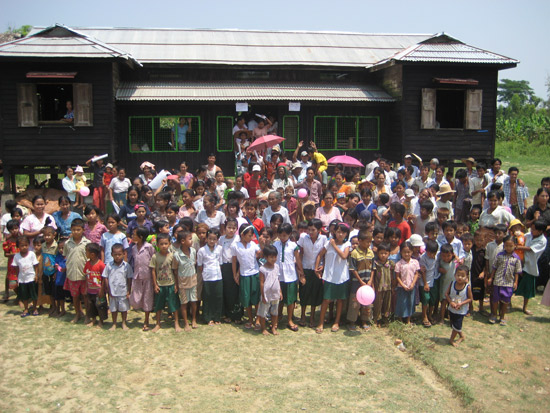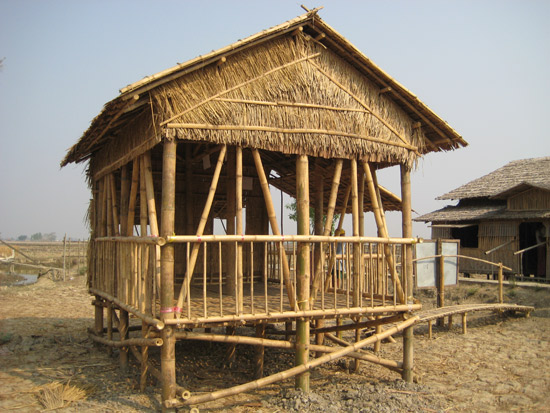Myanmar
‘Safer schools programme” Myanmar
Development Workshop France/Save the Children Alliance

Support to rural communities for the anti-cyclonic strengthening of schools repaired or rebuilt after Cyclone Nargis in 2008 - 2009, Myanmar
A project by DWF in collaboration with Save the Children Alliance, Myanmar, this project uses DWF experience in Vietnam to develop local knowledge about cyclone resistant construction techniques in the Irrawaddy delta, through community workshops and the retrofitting of schools as a public demonstration of techniques that can be used by the community. Phase 1: October 2008 – March 2009/ Phase 2 through to December 2009. A team of Myanmar engineers travelled to the DWF office in Vietnam for training in November 2008, and the technical assistance for the project is partly provided by the DWF Vietnam team. Save the Children Alliance provides the funding and all institutional, administrative and logistical support.
A project by DWF in collaboration with Save the Children Alliance, Myanmar, this project uses DWF experience in Vietnam to develop local knowledge about cyclone resistant construction techniques in the Irrawaddy delta, through community workshops and the retrofitting of schools as a public demonstration of techniques that can be used by the community. Phase 1: October 2008 – March 2009, and Phase 2 from April to December 2009.. A team of Myanmar engineers travelled to the DWF office in Vietnam for training in November 2008, and the technical assistance for the project is partly provided by the DWF Vietnam team. Save the Children Alliance has assisted by finding funding and provided all institutional, administrative and logistical support. The programme is based on the application of DWF’s ten key principles of cyclone resistant construction, tested over the past 20 years by DWF in Viet Nam, and applied no in Myanmar on the schools. These generic principles of safe construction apply to all types of rural building, schools and houses included.

Starting in October 2008 the pilot phase of this project worked in cyclone affected townships in Yangon and the Irrawaddy Delta regions. The programme works in groups of villages, selected on the basis that they each have a school that has been repaired or rebuilt after Cyclone Nargis damaged or destroyed it. In the immediate aftermath schools were repaired but not made to resist future cyclones and associated flooding. The project uses the strengthening of schools as an opportunity to develop disaster risk reduction techniques in the community.
In each group of villages, the project organizes a workshop open to the public, but focused on builders and leaders in the community. Participants assess why buildings are damaged, and what steps can be taken to make them storm and flood resistant. This is followed by practical work on the school that is to be strengthened to familiarize participants with the applied strengthening techniques. Once materials are available, the school is then strengthened by local builders. On completion, the strengthened school is opened to the public so that the work that has been done can be explained and appreciated. Children will also learn about methods to improve safety in their communities. This will initially be carried out through awareness raising about safe construction techniques in their school. Indirectly, the project aims to help families see how their own homes can be also be strengthened with the same basic principles of cyclone resistant strengthening.
The initial workshops in the Phase 1 in which 44 schools have been strengthened show that there is great interest in the programme, highlighted by the fact people are coming from other villages that do not have a school that will be strengthened in the present programme. In addition on each school site a small bamboo frame structure is build as a childe friendly space but really aimed at parents who can see how the ten key principles of cyclone resistant can be applied to timber frame, brick, reinforced concrete and bamboo structures.
Before Nargis, very little attention was paid to disaster risk reduction. In the complex initial rehabilitation process after the cyclone DRR has not featured high on the priority list. However, it is clear that there is both a need and public interest to see how buildings and communities can be made safe from future disasters, and this extends beyond the scope of cyclones and flooding, other regions being affected by earthquakes as well.